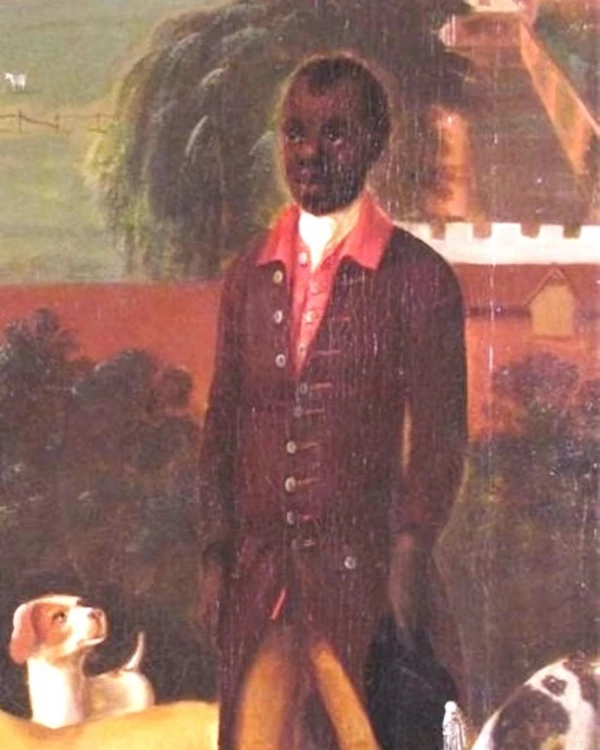Last updated: July 28, 2025
Person
Thomas Vrooman

An enslaved man tending to his master. Circa 1780, Britain. Unknown artist.
With the coming of the War for American Independence to the greater Mohawk Valley area in the summer of 1777, not all men were fighting for the country’s independence. Some men took it as an opportunity to fight for their own independence. One such man was Thomas Vrooman.
Vrooman was a thirty-year-old African American man living enslaved in Schoharie, New York in 1777. No doubt bearing the last name of his enslavers, Thomas belonged to one of the members of the Vrooman family, one of the most prominent families in the Schoharie Valley; Peter Vrooman served as commander of the 15th Regiment of Albany County Militia during the war.
In 1775, Virginia Governor Lord Dunmore issued a proclamation granting freedom to any Virginia slaves who ran away from their rebel masters and joined the British forces. Word of the proclamation spread throughout the 13 colonies, and enslaved African Americans who heard of it applied it to themselves, no matter what colony they resided in. Thomas may very well have heard of the proclamation, but with no British forces nearby, he had no opportunity to leave.
This situation changed in the summer of 1777. Groups of men in the Mohawk and Schoharie valleys still loyal to England had been secretly forming into military companies to join British forces whenever they appeared. Word reached them in July that a large British force under General Barry St. Leger was invading the Mohawk Valley. Initially planning to simply march to join St. Leger’s army, the Schoharie Loyalists finally decided to rise and secure the area for the British. The uprising began on August 8. It was probably at this point as the uprising began, and chaos and confusion ensued, that Thomas Vrooman saw his chance to escape and joined the Loyalists. While enjoying initial success, the uprising was ended in a short skirmish with Continental dragoons (calvary) on August 13. The scattered Loyalists regrouped and marched for Oswego, where they eventually joined St. Leger’s army on its retreat from Fort Stanwix. Thomas Vrooman was one of 43 men that enlisted in Sir John Johnson’s King’s Royal Regiment of New York.
Thomas would have spent a good deal of his time with various detachments of the regiment scattered around Canada building and repairing fortifications and defenses, then guarding and garrisoning them as well. Thomas also did duty as a servant to Sir John Johnson. He may have also taken part in Sir John’s raid into the Mohawk Valley in May of 1780, which destroyed the settlement of Caughnawaga (modern Fonda, NY) and allowed over 145 Loyalist men, women, and children to escape to Canada. Unfortunately for Thomas, however, his newfound freedom was soon to end.
In October of 1780, Sir John Johnson led a large army of British, Loyalists, and British allied Indians into the Schoharie and Mohawk Valleys, laying waste to all the settlements they passed through. Rebel militia finally caught up with the raiders in the late afternoon of October 19th and the Battle of Klock’s Field ensued (near modern day St. Johnsville). Thomas’s company made up part of the rearguard that allowed Sir John’s force to escape across the Mohawk River. Disorganized by the rebel fire and increasing darkness, the rearguard was unable to find the rest of the British force and 13 of them became prisoners of the rebels. Among them was Thomas Vrooman.
While we currently know nothing more of Thomas’s story, we can unfortunately assume that he was returned to slavery, the only question mark being as to whether it was to his former enslavers or someone new. The fact that he was never included in any prisoner exchanges or releases of prisoners after the war ended helps confirm this. Thomas lost his hard-won and temporary freedom helping his brother soldiers escape captivity. If captured, their freedom would have been ensured at the war’s end.
It is unlikely that Thomas Vrooman ever knew freedom again.
